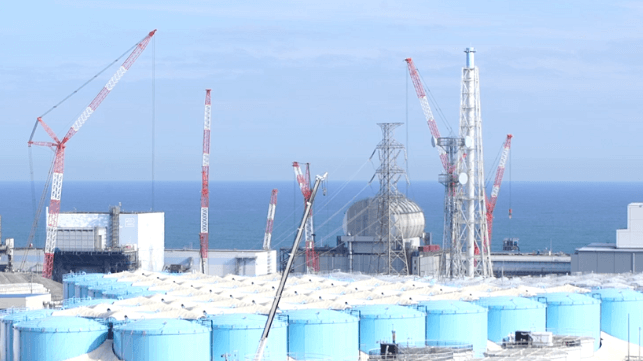Japan Approves Plan for Release of Fukushima Nuclear Wastewater

On Friday, Japan’s nuclear regulator approved a detailed plan for the release of treated radioactive wastewater from the Fukushima Daiichi nuclear powerplant into the Pacific. The stored water amounts to more than 1.3 million tons, and the temporary tank farm at the plant is running out of room.
The powerplant experienced a meltdown in 2011 after a severe earthquake and tsunami. Radioactive fuel debris remains at the bottom of all three water-flooded reactor units, and groundwater infiltration creates a constant supply of contaminated wastewater at a rate of about 200 tonnes per day. In order to prevent the release of this contaminated water from the site into the surrounding environment, operator Tepco continually pumps it out, treats it, and stores it in a giant tank farm on site. Tepco filters out about 60 toxic or radioactive contaminants prior to storage, but it has not been able to remove radioactive tritium (hydrogen-3).
Last year, the Japanese government said it had resolved to release the wastewater as a necessary step in the ongoing decommissioning of the facility. This led Tepco to prepare a plan, which was submitted to Japan’s Nuclear Regulation Authority last December.
“The release plan had no major technical and safety issues. We will ensure the approved procedures are strictly followed with transparency,” said Toyoshi Fuketa, Chairman of the Nuclear Regulation Authority.
The wastewater will still contain traces of tritium, which is hard to remove. Limited scientific research is available on the long-term impacts of tritium exposure on the human body.
In the release plan, TEPCO intends to transport the treated and releasable wastewater through pipelines from storage tanks to a coastal facility, where it will be diluted with seawater. Then, an undersea tunnel with an outlet about 0.6 miles away will be used for discharge to minimize impacts on local fishing.
Local fishing unions have been opposing the plan due to fears that it might disrupt their livelihoods. South Korea is yet to lift a 2013 ban on Fukushima seafood. Locals are worried the release of the wastewater would be another setback to a fishing industry they have tirelessly rebuilt since the nuclear disaster.
China, Taiwan and Pacific Island nations have also voiced concerns over possible nuclear pollution in the Pacific.
A 2020 report by Greenpeace castigated the Japanese government for misrepresenting some safety aspects of the wastewater release.

that matters most
Get the latest maritime news delivered to your inbox daily.
“Not only is ocean discharge the cheapest option, it helps the government create the impression that substantial progress is being made in the early decommissioning of the Fukushima reactors,” asserted Shaun Bernie, a senior nuclear specialist for Greenpeace East Asia.
In addition, Greenpeace raised the possibility that there could be other nuclear contaminants besides tritium present in the wastewater. The treatment method applied by Tepco, the Advanced Liquid Processing System (ALPS), is not designed to remove carbon-14. The isotope is a long-term radiological hazard and is easily integrated into the marine carbon cycle.
